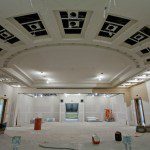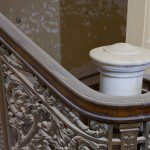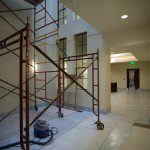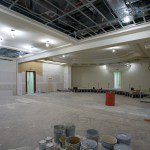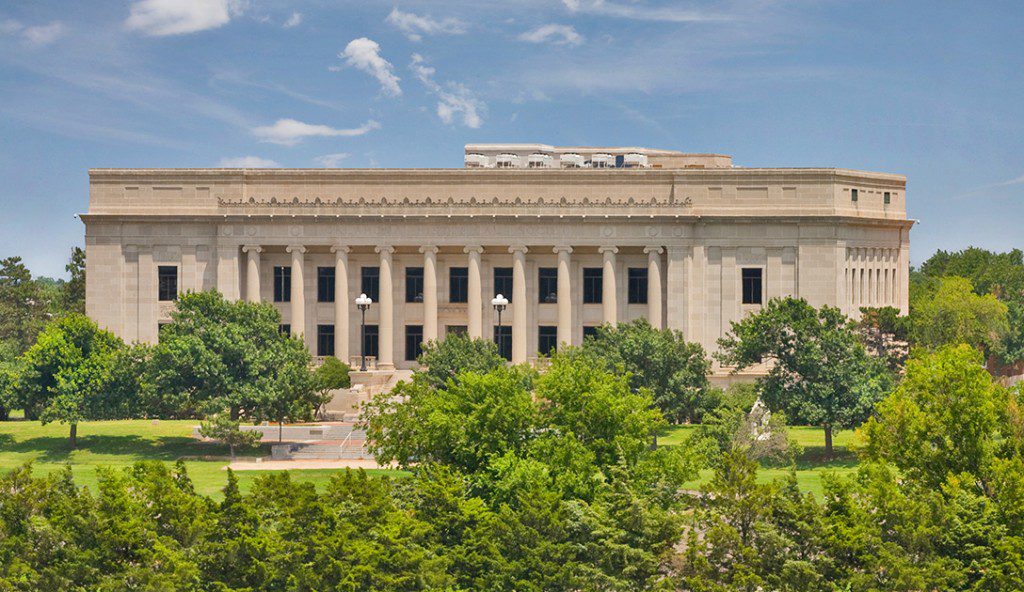
Supreme Court Justice Yvonne Kauger was only 10 years old when she first visited the Oklahoma Historical Society building in Oklahoma City. Even then, she recognized its majesty.
When she was sworn in as an Oklahoma Supreme Court justice in March 1984, she had her eye fixed on the building – also known as the Wiley Post Building – as a future home for the state’s judicial system. To her, it had all the regal earmarks of a home for the state supreme court. Today, the Oklahoma Judicial Center, completed in June 2011, represents one of Oklahoma’s most significant art and preservation efforts.[pullquote]”This building was designed to be a museum, and it is now the center of the judicial branch of government, but the building still stands in service to the public. It is not in disrepair, and most important, it has not been the victim of a wrecking ball. It is a great building with a new life,”[/pullquote]
“We are open to the public. We have a continuing education program for lawyers. We show movies with a legal theme, followed by panel discussions. We also have the best art collection in the state,” Kauger says of the center’s offerings.
It took 30 years, but Kauger was never swayed in her mission to see the historical society building house Oklahoma’s high court. She admits to light-heartedly taunting Dr. Bob L. Blackburn, OHS executive director, about taking custody of his building. Her zeal was heightened upon discovering a wealth of art in the OHS vaults – priceless sculptures and paintings now displayed in the judicial center.
In 1997, as chief justice, Kauger appealed to the state legislature to find a new facility for OHS and to have the old building repurposed for the state suprme court. Over the years, she also pled her case to former governor Frank Keating; then-secretary of state Tom Cole; ex-presidents pro tempore Stratton Taylor, Cal Hobson and Glenn Coffee; and Glen Johnson and Lloyd Benson, each of whom served as speaker of the state house of representatives. Former state appropriations committee chairmen E. Kelly Haney in the senate and Bill Settle in the house anticipated her at every meeting with her signature homemade oatmeal cookies – what Kauger today calls “the bricks and mortar of the Oklahoma Judicial Center.”
The OHS moved into the Oklahoma History Center, which opened in 2005. At the vacated building, renovation was made possible by three bond issues. TAP Architecture renovated the existing structure and designed an 89,000-square-foot expansion. Kauger chaired the building and art committees, working for two decades to keep the project alive. When the legislature passed the Oklahoma Art in Public Places Act in 2004, it allowed planners to designate a percentage of the construction and renovation funds to fine art acquisition.
Kauger, however, isn’t alone in her appreciation of preserving and promoting history.
“One of the most important factors in maintaining the integrity of the supreme court is the preservation of the separate and independent judicial branch of government as guaranteed by our constitution,” says Justice Steven W. Taylor. “The Oklahoma Judicial Center now stands as a public and physical symbol of judicial independence. This building is dedicated solely to the Oklahoma court system and the administration of justice.
“…This building was designed to be a museum, and it is now the center of the judicial branch of government, but the building still stands in service to the public. It is not in disrepair, and most important, it has not been the victim of a wrecking ball. It is a great building with a new life,” Taylor says.
Blackburn shares a similar perspective. “For more than 30 years, I have witnessed many efforts to collect, preserve and share Oklahoma history,” he says. “The adaptive conversion of the Oklahoma Historical Society into the Oklahoma Judicial Center, followed by the creative display of art reflecting our shared history, will always stand out as one of the most remarkable.[pullquote]“The additions are sympathetic to the historic nature of the building and add a new level of function without compromising form.”[/pullquote]
“The building itself is a piece of art that has been treated with respect. The neo-classical structure is still a picture of symmetry, with massive columns and limestone details that reflect the brilliance of ancient Greek culture,” Blackburn continues.
The judicial center retains the building’s original marble floors, hardwood features and priceless wall murals painted by the famed Kiowa Six artists.
“The additions and alterations blend seamlessly with the original fabric of the building,” Blackburn says. “The additions are sympathetic to the historic nature of the building and add a new level of function without compromising form.”
Kauger says the renovation has enhanced the integrity of the state’s high court system.
“For the first time, citizens can actually see the third branch of government at the Capitol complex. Judges and court clerks now have a place to meet,” she says. “We were scattered over the city. Some of the justices’ clerks were in the Capitol basement. Our administrative offices were in another building. Now, we are all able to work together.”
The rebirth of the building was documented in images by Dr. Neil Chapman, a now-retired professor from California, who toured the Capitol in 2009. Documenting the renovation and center’s art collection became a compelling photo project.
“Art is the soul of our cultural past,” Chapman says. “The judicial center building is not just stone and grout. The renovation design reflects a respect for the traditional past – preservation with a thoughtful integration of the future. I was acutely aware I was participating in a historical moment.”
Kauger says she hopes the judicial center’s transformation marks a trend in Oklahoma’s preservation story. To her, the center is a significant gathering place.
“This was always destined to be the supreme court’s building,” she says. “More than that, it is the people’s building.”






















